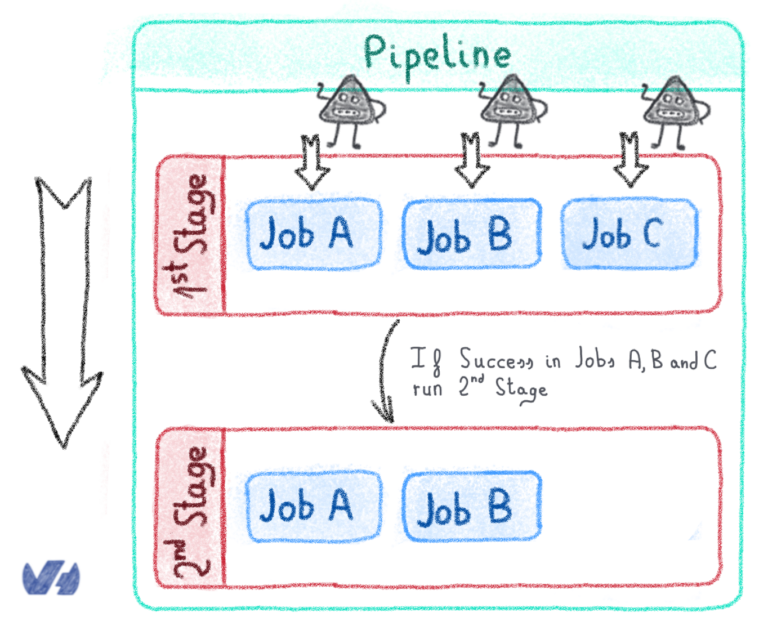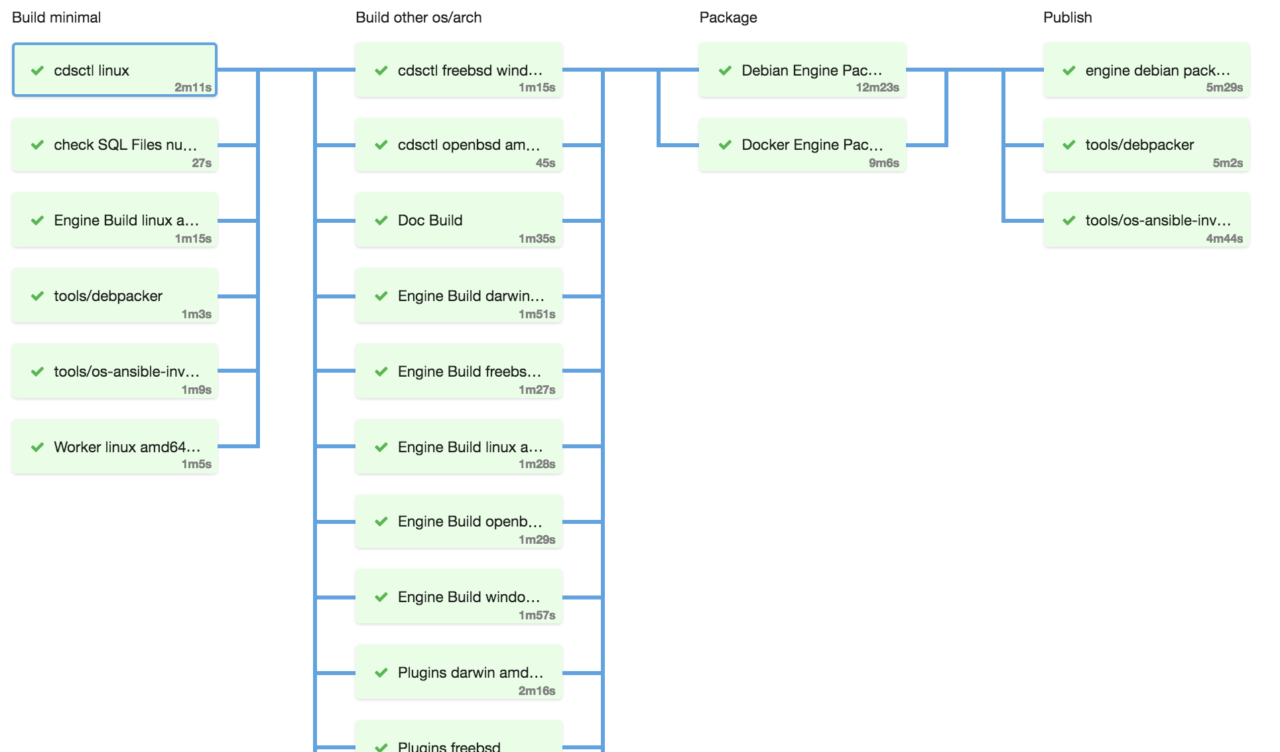Pipeline

A pipeline describes how things need to be executed in order to obtain the expected result. In CDS, a pipeline belongs to a single project and can be used with the applications of that project.
A pipeline is structured in sequential stages containing one or multiple concurrent jobs.
CDS pipelines can be parametrized. This allows you to reuse the same pipeline when you have similar workloads. For example, you could use the same pipeline to deploy in your pre-production environment first and then to your production environment.
A stage is a set of jobs that will be run in parallel. Stages are executed sequentially, if the previous stage is successful.
Let’s take a real-life use case: the pipeline that built CDS. This pipeline has four stages:

- The Build Minimal stage is launched for all Git branches. The main goal of this stage is to compile the Linux version of CDS binaries.
- The Build other os/arch stage is only launched on the master branch. This stage compiles all binaries supported by the os/arch: linux, openbsd, freebsd, darwin, windows – 386, amd64 and arm.
- The Package stage is launched for all Git branches. This stage prepares the docker image and Debian package.
- Finally, the Publish stage is launched, whatever the Git branch.
Most tasks are executed in parallel, whenever possible. This results in very fast feedback, so we will quickly know if the compilation is OK or not.
Stages
Usually in CDS a build pipeline is structured of the following stages:
- Compile stage: Build the binaries
- Analysis & Unit Tests stage: Run all unit tests and analyse code quality
- Packaging stage: Build the final package, Virtual Machine Image or Docker Image.
A Stage is a set of jobs that will be run in parallel. Stages are executed sequentially, if the previous stage is successful.
You can define trigger conditions on a stage, to enable/disable it under given conditions. For instance, you may want to run the Compile Stage and Analysis & Unit Tests stage on all branches but dedicate the Packaging Stage run on master and develop branches only.